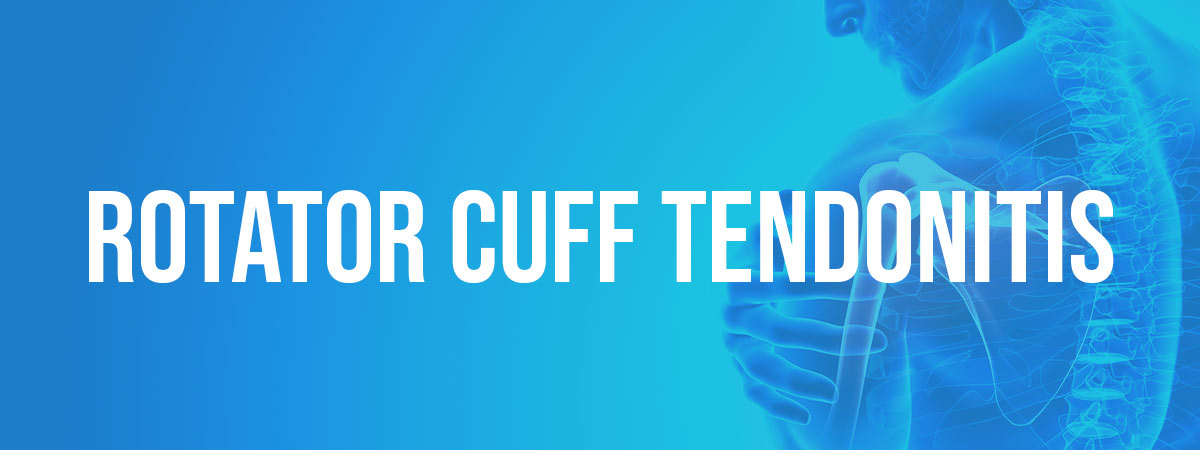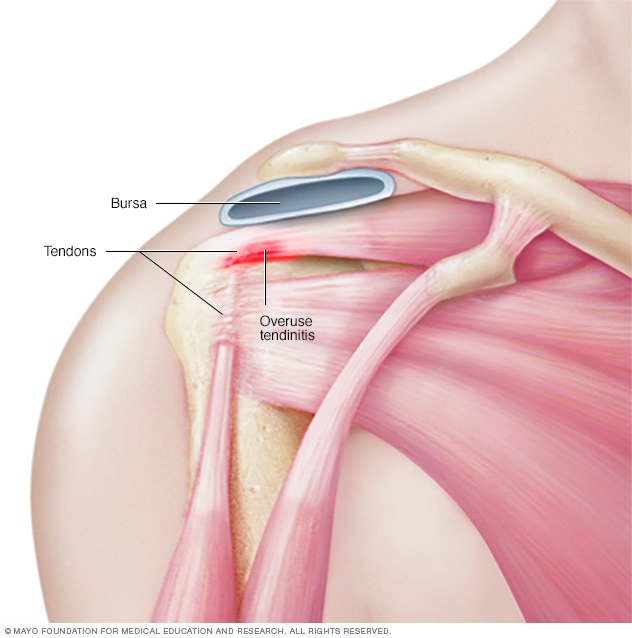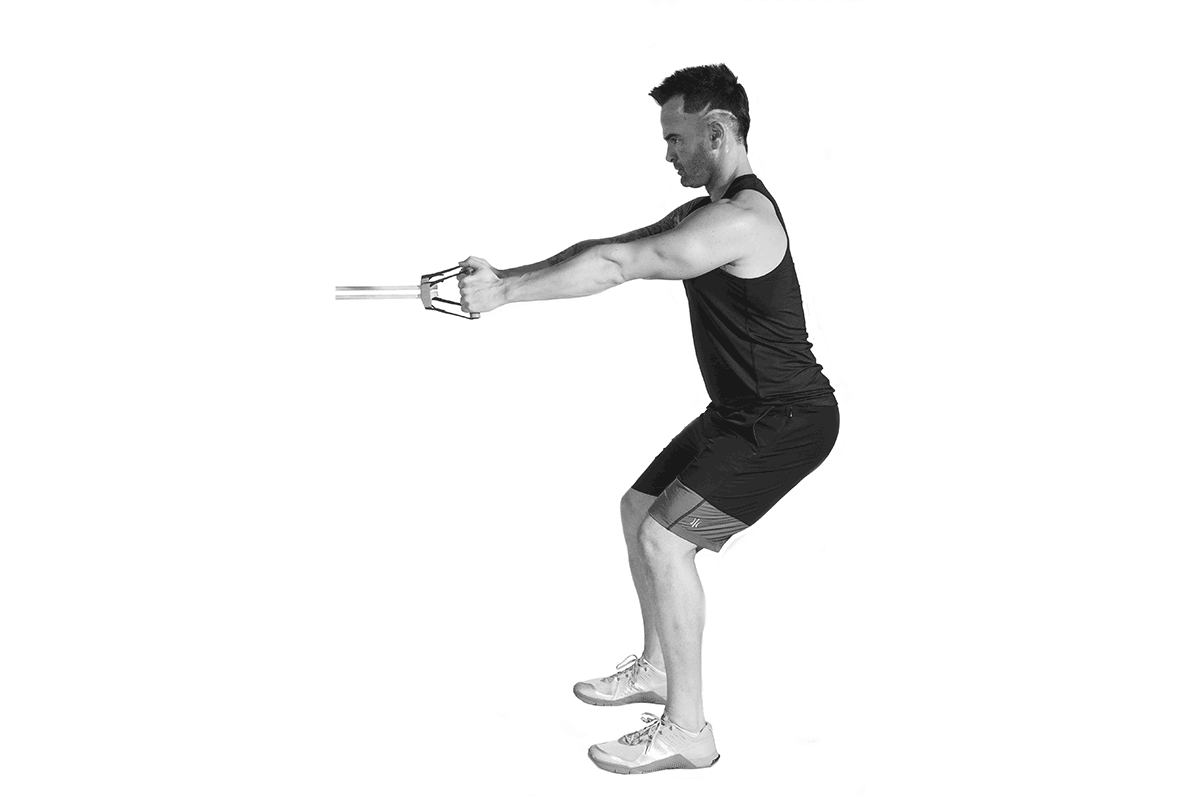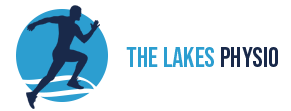
Rotator Cuff Tendonitis
If lifting your arms to put on a jumper hurts, or you’re putting the dishes on the lower shelves because your shoulder hurts, you might have rotator cuff tendonitis.
About rotator cuff tendonitis
When it comes to the shoulder, rotator cuff injuries are by far one of the most common issues we treat at The Lakes Physio. Tendonitis or tendinopathies are injuries sustained to the tendons, and whilst we often see this affect the shoulder, it can also be seen on the wrist, knee, shin and heel. Tendons are contractile structures at the interface between muscles and bones – they can stretch, but they can also become irritated or inflamed.

What is the rotator cuff?
The rotator cuff are a group of four muscles which originate from the shoulder blade (scapula) and attach at the humerus (upper arm bone). As their name suggests, their primary role is to allow for rotation at the shoulder joint. This is important for day-to-day activities such as dressing, and scratching, or washing the back. One of their primary functions is also around stabilising the shoulder joint.
The four rotator cuff muscles are listed below:
- Supraspinatus
- Infraspinatus
- Teres minor
- Subscapularis
:max_bytes(150000):strip_icc():format(webp)/the-rotator-cuff-2696385-FINAL1-474e476cc4554dbd97995610f4402577.png)
What is tendonitis?
A tendonitis is the inflammation or irritation of a tendon. This can be the result of an acute overload on the tendon (a precipitating event or mechanism of injury), such as lifting a heavy weight or more commonly, repetitive overload (micro-tears sustained cumulatively over a period of time).
It is a common injury for athletes such as swimmers who do a lot of repetitive strokes, as well as factory workers who constantly lift above their heads.

PHYSIOTHERAPY CAN HELP THROUGH:
Advice and education
Using an acute management technique such as the RICE regime (Rest, Ice, Compression, and Elevation) can be helpful in the early stages of the injury recovery process to maximise healing and prevent further damage
Education on the pathophysiology of the injury sustained is also a great piece of advice, so patients are informed on the recovery time frames and treatment expectations.
:max_bytes(150000):strip_icc():format(webp)/184870960-56a6d98f3df78cf772908bfe.jpg)
RICE (Rest, Ice, Compression, Elevation) can be helpful in the early stages of the injury recovery process to maximise healing, and also prevent further damage
Manual therapy
Physiotherapy is a hands-on profession and manual therapy is one of its’ biggest foundations. Treatment techniques can include:
- Deep tissue massage and Trigger point release – This can be effective to release muscles that build up tension secondary to tendonitis. Common muscles treated include the upper trapezius levator scapulae and the cervical paraspinals. Trigger point release of the rotator cuff muscles can also be effective in reducing pain
- Joint mobilisations – Maitlands and Mulligans. This can be effective in overriding pain stimulus and reducing pain
Adjuncts (Supplements to therapy)
- Dry Needling – This can be used to target tense muscles secondary to the injury and can be used to override painful stimulus
- Strapping – This can be used to support the shoulder joint and the rotator cuff muscles to prevent any further damage
Exercise therapy
To supplement post treatment relief from manual therapy in the clinic, rehabilitation exercises must be done. These exercises are targeted at improving shoulder range of motion, muscular strength and functional capacity.
Exercises will always be graded, and they will progressively increase in difficulty as the condition naturally heals.
Rehabilitation time frames vary from 4-8 weeks for mild tendonitis to 6 – 18 months for more chronic tendinopathies. Initially, physiotherapists may need to see you once or twice a week for rehab. As the injury heals and more function is regained, the frequency of treatment drops and there is a larger emphasis on self management with the rehab exercise programme.
Here’s some examples of common exercises which your physiotherapist might include in your rehab routine, from start to finish:
Early Stage Rehabilitation Exercises
Isometric external shoulder rotation

Resisted Theraband rows

Prone lower traps raise

Mid-STAGE REHABILITATION EXERCISES
Dumbbell side raise

Unstable surface push-up
/37-3120145-Stability-Ball-Pushup-GIF-cb05e8632dcf4f9cb49503cb2d27856c.gif)
Late-stage REHABILITATION EXERCISES
Eccentric external rotation with dumbbell or Theraband

Kettlebell Turkish get up

If you feel like you are experiencing symptoms of rotator cuff tendonitis, don’t hesitate to give me a call and book in today.
